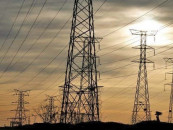Pakistan defies economics in govt-growth relationship
Cut in government’s size does not lead to increase in economic growth in country.

Economists of the world have concluded that there is an inverse relationship between the size of the government and economic growth as a reduction in the size of the government leads to greater economic growth as this frees up space for the private sector to operate.
Beginning from the history of modern Europe, where princely states gave in to merchant oligarchies, and the emergence of free market bastion in the US, where even public infrastructure was laid by the private sector, to the more recent examples of India and China, the message is loud and clear.
According to Fraser Institute’s Economic Freedom of the World Index, Pakistan has consistently shed its statist fats as it notes a gradual decline in the size of the government. In fact, as per this index, Pakistan, which is otherwise ranked 111th in terms of economic freedom, is ranked at an ostensibly high position of six in the world with respect to the size of the government. Only five countries are considered better than Pakistan on this count.
Has a reduction in the government size led to an increase in economic growth for Pakistan? The answer is a clear no, as is evident from the low growth in the last seven years. As it “progressed” on its rank of the government size, its economic growth has actually slowed down. Why it is so?
Noted economist Nadeemul Haque posits that it is not the nominal size of the government but its footprint that matters. While acknowledging that the size of the government-to-GDP in Pakistan is not more than 20%, its footprint, as measured by its regulatory strangulation (my own formulation), puts the size of the government far beyond 60% of GDP.
In other words, the economist’s thesis is suggesting that the theoretical relationship between the size of the government and economic growth is valid. The possible flaw in this line of argumentation is that it is subjective – to define government footprint in this manner, given that the government does have a minimum regulatory oversight role, may create problem of validity.
Bows down to the powerful
Far from establishing any causal relationship between economic growth and size of the government in any direction, I look at this puzzle from the perspective of politics rather than economics and argue that the hypothesis of a weak, soft and possibly criminalised state, as put forward by the political philosopher Khalil Ahmad, offers a better explanation.
A state which succumbs to the withholding regime instead of functioning tax collection machinery, imposes 12 taxes on an electricity bill and privatise security, is certainly a soft and predatory state. It bows down to the powerful too quickly, jells down with the evaders firmly and exploits remaining (rich and poor alike) endlessly.
In such states, a nominal reduction in the size of the government, without understanding the direction of reduction, cannot help in increasing economic growth. In fact, if the reduction means a further weakening of law and order and criminal justice and tax administration, then the reduction is likely to accentuate a decrease in economic freedom, and hence growth.
Economic freedom pre-supposes a predictable and protective state and it cannot exist in a soft, twistable and predatory state. This relationship between the nature of the state and size of the government is probably the missing link that economists tend to overlook. In case of Pakistan, this has most visibly resulted in the emergence of a state-corporate nexus, where private-sector interests overcome a fair and open public policy-making.
The politicians, who are the chief guardians of the state, sit with private-sector representatives and often take policy decisions with their connivance. Economics take a back seat.
Finally, that is why a nominal reduction in the size of the government has possibly resulted in reduced economic growth. In other words, Pakistan defies economic theory.
Extreme case
The case of Pakistan may be an extreme one but it suggests that it is not easy to validate the almost universal law of an inverse relationship between economic growth and size of the government. A nuanced understanding is necessary to understand the intricacies of policy-making in the presence of a soft and predatory state.
That is the reason to lay stress on the protective function of the state and freedom of markets at the same time. There is no tradeoff if the two organs of a society perform the function, they are meant to. The state must provide equal and predictable security for all citizens and must leave pretty much everything else to open and free markets.
The writer is the founder and executive director of PRIME Institute, an Islamabad-based economic policy think tank
Published in The Express Tribune, July 28th, 2014.
Like Business on Facebook, follow @TribuneBiz on Twitter to stay informed and join in the conversation.



















COMMENTS
Comments are moderated and generally will be posted if they are on-topic and not abusive.
For more information, please see our Comments FAQ